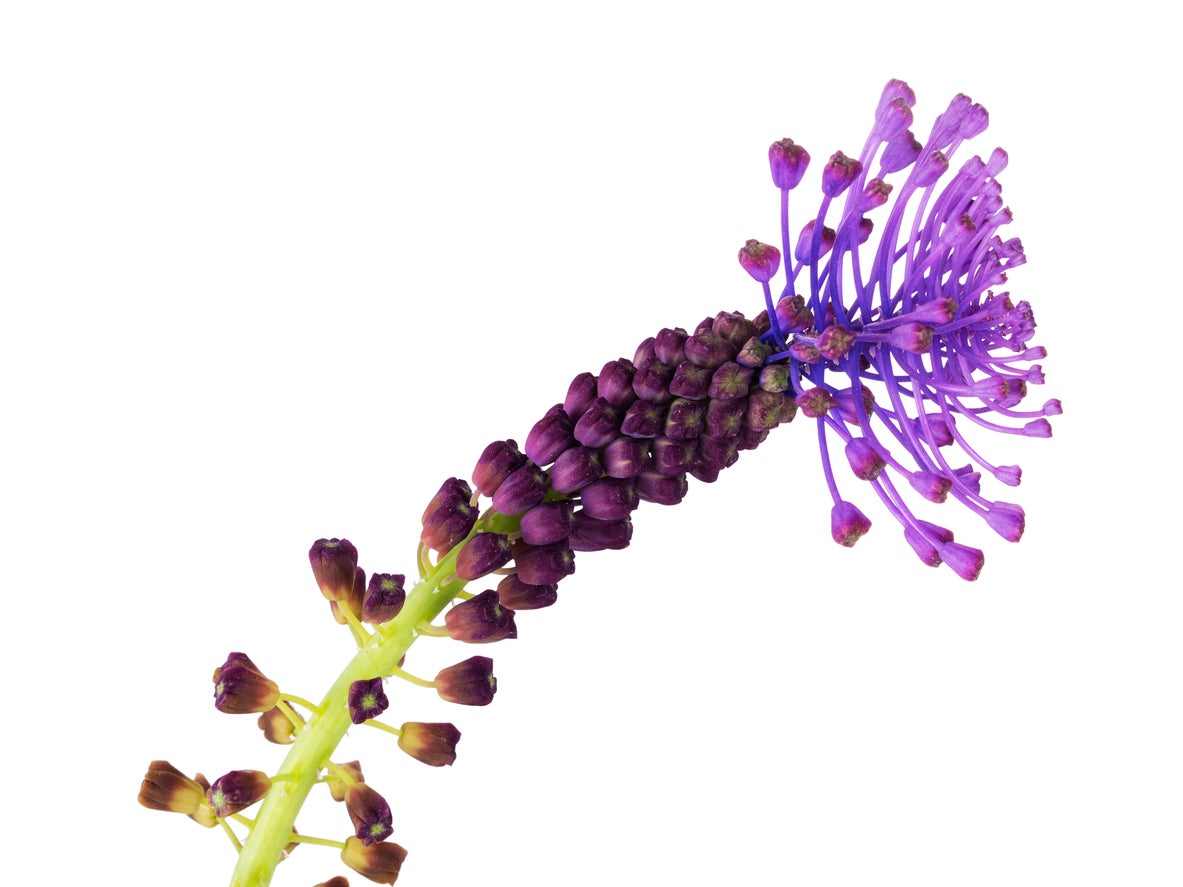Feather Hyacinth Plants – Tips For Planting Feathered Grape Hyacinth Bulbs


Bright and cheery, grape hyacinths are bulb plants producing purple colored flowers in early spring gardens. They can also be forced indoors. The feather hyacinth, aka tassel hyacinth plant (Muscari comosum ‘Plumosum’ syn. Leopoldia comosa), can add another cool textural element since the blossoms are feathery plumes rather than classic petals.
If you have some feathered grape hyacinth bulbs and are ready to go, you’ll want to know how to grow a Muscari feather hyacinth. Read on for information about these plants, including tips on their care.
About Feather Hyacinth Plants
Muscari plants are popular, easy-grow bulbs that produce pink, white, or deep lavender flowers. If you want something above and beyond what everyone else is planting, buy feather grape hyacinth bulbs instead.
Feather hyacinth plants are closely related to regular grape hyacinths, but their flowers do not look like any other Muscari. The flowering racemes look like violet plumes rather than flowers. Consisting of fine, feathery threads, the blooms seem to float above their grassy foliage, each between 8 and 12 inches (20-31 cm.) tall.
On the other hand, feathered grape hyacinth bulbs closely resemble other Muscari bulbs. They look like small white onions. Each is about 2 inches (2.5 cm.) in diameter, about the width of a half-dollar coin.
You’ll need approximately nine bulbs for every square foot (929 sq. cm.) of flower bed. If left to their own devices, they will often naturalize in the area and keep blooming year after year in spring.
Care of Feather Hyacinths
If you are wondering how to grow a Muscari feather hyacinth, it isn’t any harder than other bulb plants. You’ll need feathered grape hyacinth bulbs and cultivated, well-draining soil. These bulbs are hardy down to USDA plant hardiness zone 4.
Sign up for the Gardening Know How newsletter today and receive a free copy of our e-book "How to Grow Delicious Tomatoes".
Plant the bulbs about 5 inches (13 cm.) deep and 3 to 4 inches (8-10 cm.) apart. They should be planted pointy tip up in an area that gets some sun and some shade. They bloom in April or May.
To take care of feather hyacinths, provide water a few times a week and fertilize with bulb food once a year. In cooler climates, mulch the soil in the bed where the feather hyacinth plants are situated.

Teo Spengler is a master gardener and a docent at the San Francisco Botanical Garden, where she hosts public tours. She has studied horticulture and written about nature, trees, plants, and gardening for more than two decades, following a career as an attorney and legal writer. Her extended family includes some 30 houseplants and hundreds of outdoor plants, including 250 trees, which are her main passion. Spengler currently splits her life between San Francisco and the French Basque Country, though she was raised in Alaska, giving her experience of gardening in a range of climates.